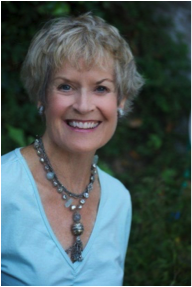How to Approach a Gallery Part 1
Approaching a Gallery by artist coach, Mary Edwards, Ph.D.
1st of a 3-part series of articles.
Every time I ask a gallery owner how they found the new artist they are excited about, they describe a process of discovery:
- “She was featured on a local TV show.”
- “I read about him in Colossal (an online art & design magazine).”
- “I found her work at the MFA graduation show.”
- “I saw his work on Instagram.”
- “An artist we represent introduced her.”
Notice the language here. Galleries like to discover artists. They want to find you, instead of being bombarded by your emails. Even galleries who accept portfolio submissions tend to notice artists whose work they have already seen or heard about. I know this is frustrating, but it also should be clarifying. Your job is to be visible, to get on the radar of galleries that interest you.
First, do your research, both online and on foot. Identify a short list of galleries that could be right for you. Start local! Pay attention to galleries in your city or region; this will make your process logistically more manageable, and you will build your confidence and skills as you go.
As you review galleries, notice that most of them have a focus. They may show only abstract art, or documentary photography, or works on paper, or minimalist work; this is called their “program” or “aesthetic.” By looking quickly, at the represented artists, you will discover what they have in common. Would your work fit into the overall look and feel of the gallery?
Pay attention to how each gallery talks about their artists. They may say they represent “emerging artists” or “mid-career artists,” but you need to know what that means. Review each artist and check to see where they are in their careers. Sometimes a gallery’s “emerging” artists have long and impressive resumes.
Also, notice what the gallery does to promote their artists. Are they attending art fairs, getting their exhibitions reviewed in art magazines, participating in local events like art walks or offering art talks? Do they advertise? Do they publish catalogs of their exhibitions? Do they actively promote their artists on social media? Since your gallery is going to take a 50% commission when they sell your work, you want to be sure that they are making an effort on your behalf.
When you have identified 6-8 galleries that interest you, let everyone in your network know who is on your short list and why. Ask them for other suggestions. Ask them for introductions. Be open to new ideas. If well-known galleries are outside your reach right now, consider new galleries or artist-run spaces.
Then begin the process of becoming visible to the galleries on your list.
- Get on their mailing list. In this way, they will recognize your name. You will be invited to openings and learn about any “calls for artists” they might post.
- Attend a number of events at the gallery, so that your face becomes familiar. You will have to stay at least 45 minutes and talk to people.
- Also, visit the gallery at a quiet time. Ask questions about the artists they show. Don’t try to promote yourself; just get to know the gallery’s interests.
- If you are active on social media, follow your chosen galleries and “like” what they do.
During your visits to a gallery, always be prepared for the unexpected. Although you’re not there to promote yourself, you may strike up a conversation with gallery staff. Make a connection if you can. If they seem receptive, you can ask one or more of the following questions:
- “How did you discover the artist (the one they are exhibiting)?”
- “Do you have a process for reviewing the work of new artists?”
- “Can you recommend any galleries that are looking for emerging artists?”
After you have done your research, and visited your top galleries, see if you can find someone in your network who is willing to introduce you. The best person is an artist friend who is already showing there. Choose someone who is at a point in their career when they are willing to be generous to other artists.
Just as a reminder, here is a list of what NOT to do when approaching galleries:
- Sending emails introducing yourself, without reference to someone they already know.
- Walking into a gallery and expecting the owner to look at your work is a pet peeve of gallery owners because it seems egocentric and ignores the fundamental principle that they want to DISCOVER you.
- Sending a portfolio to a gallery that says on their website “we are not accepting submissions at this time."
- Sending mass mailings to galleries.
- Sending mass emails to galleries on a distribution list you have purchased.
Finding a gallery is a slow, incremental process. It requires you to operate in two opposite ways simultaneously. You plan, are systematic, and do careful research, while also staying open to the random nature of the art universe. You reach out to others, asking for advice, referrals, introductions.
Most importantly, you make yourself visible. You put your name, and your face, and your art out there in the world.
Mary Edwards, Ph.D.

Mary Edwards is a Career & Life Coach for Artists, based in the San Francisco Bay Area. She works with artists across the United States and all over the world.
Mary has a Ph.D. from the University of Michigan and received her coach training from the College of Executive Coaching. She brings a unique combination of business knowledge, art world experience, and professional coaching skill to her practice.
To receive Free Tips for Artists (twice a month), visit www.coachingforartists.com and click on “Mailing List Sign-Up.” If you would like to schedule a time to talk, see “Contact Mary.”
Career & Life Coach for Artists
coaching@coachingforartists.com
